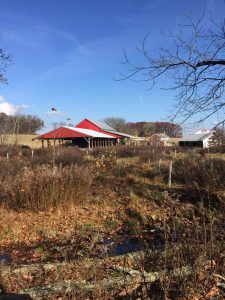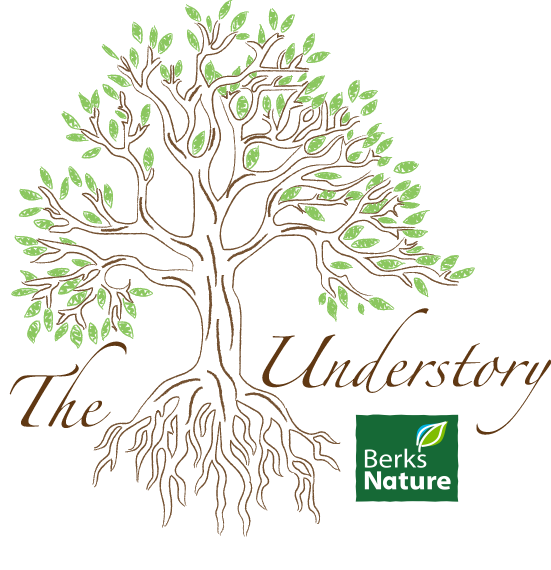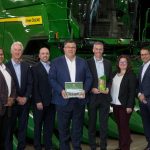
Every river starts somewhere. That somewhere, are the headwaters.
The headwaters are networks of small creeks, sometimes crossed in a single leap, that flow from a river’s source. These narrow tributaries often go unnamed, which could incorrectly assert a lack of importance. Though small they may be, the influence of the headwaters is immense.
Headwater streams are the most abundant type of waterway in most watersheds, and about 85% of stream miles in the United States are small tributaries and headwaters. Not only are headwater streams abundant, but they also mark the beginning of a complex network of physical, chemical, and biological relationships that connect all tributaries within a watershed.
Taken together, the cumulative impact of these modest creeks on downstream river networks is great.
Remember, rivers begin in the headwaters; from these trickling channels indomitable rivers are born. It is the accumulative flow of upstream tributaries, as opposed to groundwater or rainfall, that sustains these larger rivers. In fact, headwater streams contribute approximately 55% of the mean annual volume to larger, downstream rivers.
It’s not just water that flows downstream; interlacing headwaters and tributary channels create a web of dispersal corridors and refuges for wildlife, facilitating the life cycles of many aquatic and semi-aquatic animals from fish to insects to birds. These riparian residents in turn assist with the transport and transformation of nutrients and other materials; woody debris, organic matter, and nutrients all get caught up in this cycle of biogeochemical transformations on their voyage downstream.
This nutrient cycling begins in the headwaters which, once more, plays a valuable role in controlling the timing, chemical form, and distance travelled by these nourishing and necessary materials.
Consider nitrogen, a naturally occurring element that, in moderation, cycles through the environment, helping plants to grow along the way. But human activities worldwide have more than doubled the amount of reactive nitrogen entering the environment and, as of 2007, two-thirds of the United States’ estuaries were ecologically degraded from excess nitrogen.
In landscapes with minimal human manipulation, the rapid pace of nutrient cycling characteristic of small, headwater streams can remove 20-40% of the nitrogen that would otherwise be ferried downstream. But urbanization and agriculture can inundate headwaters with exorbitant quantities of nitrogen, saturating and potentially tempering the biogeochemical process of nutrient uptake and breakdown.
Whatever nitrogen can’t be processed in the headwaters flows downstream, accumulating and injuring rivers and estuaries well removed from the pollutant’s source. Mounting evidence suggests that downstream water bodies are sensitive to these faraway nitrogen sources. For example, most of the nitrogen load observed in the Gulf of Mexico at the mouth of the Mississippi River originates not along the coast, but from distant, inland agricultural watersheds.
The intimate relationship between up- and downstream waterways connects us all; a responsibility perhaps felt most keenly in headwater communities.
Furnace Creek is a small headwater tributary of Maiden Creek in Berks County, Pennsylvania. Although the Furnace Creek basin drains an area of just 3.65 square miles, this humble headwater is nestled within the monumental forests of the Kittatinny Ridge.
Stretching more than 185 miles from the Mason-Dixon Line to the Delaware River and encompassing 360,000 acres of Pennsylvania’s southeastern landscape, the Kittatinny Ridge is a critical natural asset for Pennsylvania. Its manifold arrangement of rocky slopes and furrowed forests offers extensive recreation opportunities, harbors sensitive and migratory wildlife, and purifies the air and water upon which all life depends.
It is through this rugged landscape that Furnace Creek flows, its shallow channel shaded and safeguarded by acres of mature, unbroken woodland. As a result, the sheltered reach of Furnace Creek is considered a Class A Trout Stream by the Pennsylvania Fish and Boat Commission for its self-sustaining population of brook trout, a native fish that requires cool, highly oxygenated water and a robust community of aquatic insects.
But ultimately, Furnace Creek must leave the protection of the Kittatinny Ridge, weaving through a patchwork mosaic of human settlements, swaths of remnant forest, and agriculture to join with Maiden Creek.
It is a daunting sojourn; if not properly managed, rain runoff from farms will carry excess nitrogen from manure and fertilizers into nearby waterways. The trees that would typically filter over-land water flow, buffering streams from nutrient pollution, are sparse in traditional agricultural settings. Without the trees’ protection, small creeks often fall ill; a sickness that spreads downstream.
Siblings Doris Long and David Kaufman, owners of Furnace Stream Farms, knew they could do better for Furnace Creek.
Long has always been guided by a compelling sense of community responsibility. “You should always try to do things that benefit all people,” she says.
But over the course of her varied career first as a claims taker, then as a camp administrator for Camp Fire Girls, and ultimately as a dairy farmer, Long has found time and time again that people undervalue the need for community cooperation.
Sometimes, the only way to change people’s minds is by setting a good example yourself, explained Long. Which is exactly what she and her brother did.
They began by erecting a fence to exclude their herd from entering Furnace Creek. Ground broke on this first project 15-20 years ago, Long estimates, and since then Furnace Stream Farms has also gained roofed barnyard, a dry manure stacking facility, and a liquid manure storage tank. But perhaps the crown jewel of Furnace Stream Farms’ stewardship is their riparian buffer – a forest planted alongside Furnace Creek to shield it from erosion and runoff.
Long and Kaufman started planting trees along the banks of Furnace Creek in 2006. Together with the help of Berks Nature and the Schuylkill Action Network, over 300 native trees and shrubs have been planted across 2 acres of Furnace Stream Farms.
Just as the mature woodlands of the Kittatinny Ridge sheltered and purified Furnace Creek so too will this young forest grow into a headwater guardian. Red maple, swamp oak, American sycamore, and black gum were all planted to mirror the natural assemblage of trees found in local floodplains. Efforts to follow nature’s blueprints have been so successful that shagbark hickory trees, another local, native species, have sprouted up in this newly established forest on their own accord!
The natural recruitment of shagbark hickory trees marks an encouraging milestone for the budding forest, apparently well on its way to realizing new ecological functionality and resilience.
By implementing responsible nutrient management and planting trees, Furnace Stream Farms is maintaining and extending the invaluable services cultivated by its namesake headwater: limiting nitrogen influxes preserves Furnace Creek’s capacity for nutrient cycling; streamside trees absorb rainwater and facilitate groundwater recharge, assisting the creek’s ability to manage water flow downstream; and repairing the relationship between the land and its headwaters rebuilds critical wildlife habitat.
Thanks to the intimate connectivity between the headwaters and their river network, this stewardship benefits not just Furnace Stream Farms, but everyone living downstream.
Just a little over 2 miles beyond Furnace Stream Farms, Furnace Creek flows into the Maiden Creek, which drains into Lake Ontelaunee, a drinking water reservoir serving 125,000 people in Reading and other nearby municipalities. Beyond Lake Ontelaunee, Maiden Creek joins the Schuylkill River which then continues downstream to connect with the Delaware River in Philadelphia.
We may feel removed from these distant communities, but just as negligent behavior in the headwaters can translate to downstream damage, Furnace Stream Farms has demonstrated how responsible stewardship can share the benefits of clean, healthy water with downstream neighbors.
At the heart of Long’s stewardship ethic is a deeply rooted sense of community responsibility and cooperation. Reflecting on 15 years of conservation at Furnace Stream Farms, Long is reminded of the collaboration that made these improvements possible: in addition to Berks Nature, the USDA’s Natural Resource Conservation Service, Berks County Conservation District, Stroud Water Research Center, Schuylkill Action Network, Schuylkill River Greenways National Heritage Area, Reading Area Water Authority, and National Fish and Wildlife Foundation have all supported Long and Kaufman’s stewardship aspirations.
For Long, Furnace Stream Farms’ conservation efforts serve as a potent reminder that when you live in a cooperative community, you truly can “provide the very best for people, regardless of who they are and where they live.”
Our watersheds would be a sight to behold, if everyone’s upstream neighbor shared Long’s attitude of guardianship; if all headwater communities possessed the resources to put these attitudes into practice; if we all expanded our view of community to mirror the interconnected webs of rivers along which we live. May we all one day live in cooperative watersheds, following the example of our headwater guardians.




